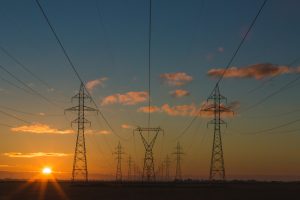The UK Government has relaxed its opposition to the development of subsidised onshore wind projects. The change, which could facilitate developments on ‘remote-islands,’ was outlined in a response to a consultation on Contracts for Difference (CfDs) for Renewable Electricity Generation [1]. This development could signal the beginning of wider policy changes for onshore wind support. Industry will want to act to ensure that momentum is not lost.
Subtle reclassifications could lead to more significant shifts in policy
By differentiating between ‘Remote Island Wind’ and other onshore wind projects, the government will allow island schemes of 5MW and above to compete for CfDs. This could be a significant change. On their return to government in 2015, the Conservatives followed through on their manifesto commitment to end new subsidies for onshore wind projects and change the law so that local people have the final say on applications [2]. However, the Government maintains that it is only the higher transmission costs of island schemes that make them a ‘less-established’ technology worthy of support.
The political pressure to support onshore wind continues to mount
The case for onshore wind grows stronger. A report published by BVG Associates last week claims that building more onshore wind farms could deliver a £1.6 billion benefit to customers [3]. In the same week, Lord Deben, the Chair of the Committee on Climate Change called on the Government to rethink its opposition to onshore wind [4]. Furthermore, the Department for Business, Energy and Industrial Strategy’s own polling demonstrated that 76 per cent of the public support onshore wind [5].
With the pressure on government to reduce energy bills and achieve emission targets, onshore wind may increasingly look like an attractive, low cost, low carbon solution.
The onshore industry will want to ensure that this trend continues
Businesses will naturally welcome this development. However, further political activity is required to make the most of this opportunity. The process of implementing this and other policies to enable onshore wind will not be painless. There is still opposition to overcome. The planning system remains favourable to local resistance. Backbenchers in rural constituencies are likely to object. The Government could lose focus as other issues such as Brexit demand more attention. Businesses need to continue to engage and lobby to make sure intentions become reality.
[1] Department for Business, Energy and Industrial Strategy, Contracts for Difference Scheme for Renewable Electricity Generation, link
[2] Gov.uk, Statement on ending subsidies for onshore wind, link
[3] BVG Associates, The Power of Onshore Wind, link
[4] The Guardian, 10 June 2018, link
[5] Department for Business, Energy and Industrial Strategy, Energy and Climate Change Attitude Tracker, link



